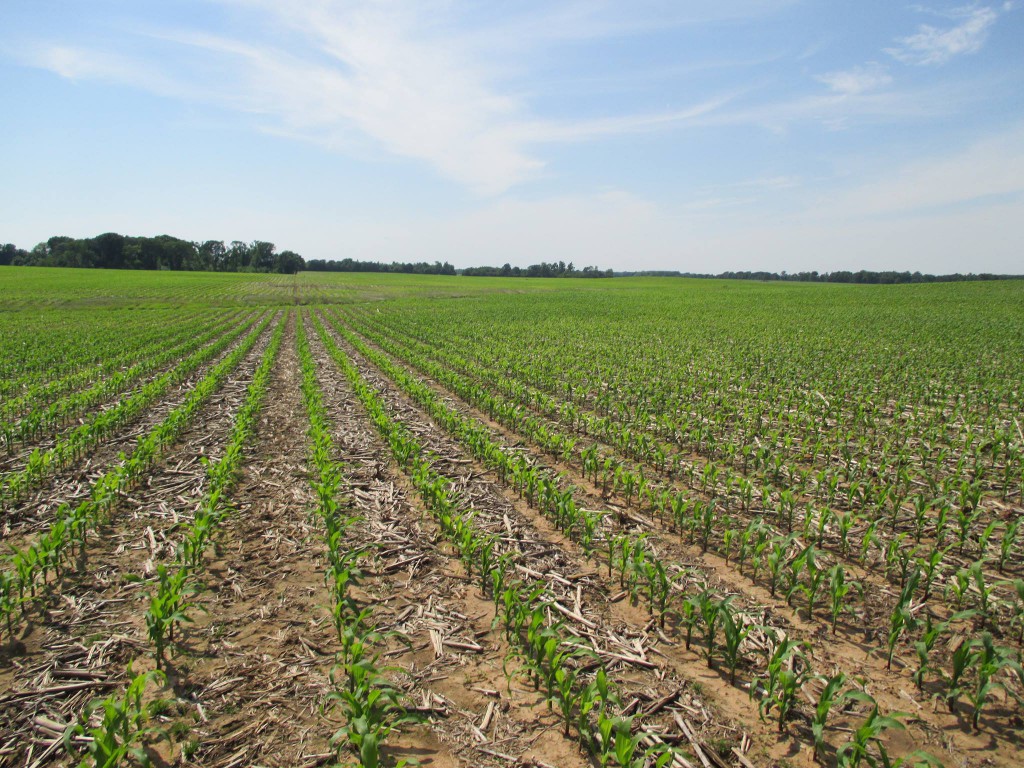
Losses during peanut harvest are common and can be caused by improper setup, operation and/or performance of the harvest equipment. Some losses can also be attributed to the field and crop conditions at harvest. Excessive losses can significantly reduce peanut yields and profits if not managed or reduced during harvest. While harvest losses cannot be not completely eliminated, it is always good to understand the level of losses so appropriate adjustments to harvest equipment settings, operational parameters or harvest decisions can be made to keep these losses to the minimum.
Peanut harvest losses can be estimated from the number of pods left on the ground after combining through a simple procedure as outlined below:
1. Measure and mark a sample area behind the combine using a tape measure and some flags or alternatively you can also use any rectangular or round sampling device as shown below. Note that the larger the measuring area or the device, the more accurate the loss estimation will be. Loss estimations are also more accurate when performed across the entire width of the windrow than in a smaller area.

2. Record the length and width of the marked section or the sampling device and calculate the area in square feet. Remember that if you are measuring a certain length of the windrow, you are working with two peanut rows and a sample width of 72 in. or 6 ft based on 36-in. row spacing.
3. Within the selected area (whether marked using flags or of the sampling device), count the total number of pods and use the formula below to estimate the harvest loss in pounds per acre. Ideally, you need to sample in multiple different areas (at least three to five), and compute an averaged value for the number of pods counted from all the samplings. Use the weight per pod from the values provided below for runner and virginia peanuts.

*The average weight per pod is estimated to be 1.8 g for virginia type peanuts and 1.2 g for runner type peanuts (varies by cultivar and moisture content, adjust accordingly for more accuracy)
43560 is the conversion factor for square feet to acres and 454 for grams to pounds.
4. If you want to be more precise, rather than using average pod weight based on peanut type, you can weigh the total number of pods (in grams) collected within the sampled area and use the formula below to obtain a better estimate of harvest loss. (it does not account for pod moisture, which is not easily measured in-field. Can adjust accordingly for most accurate values)

Example Harvest Loss Calculation: If the average number of pods counted in three, 6 ft wide by 6 ft long sections were 15, then using the sampled area as 36 ft2 and assuming virginia peanuts in the formula in step 3, the total harvest losses would be 72 lb/ac.

There are also some useful calculators available online (links provided below) that can be used to estimate peanut harvest losses. These calculators let you skip doing the math and ask to input the parameters including row spacing, length and width of the area, and peanut type along with the total number of pods counted within the selected area to provide an estimate of the harvest loss.
https://kelleymfg.com/resources/peanut-loss-calculator/
https://precisionag.sites.clemson.edu/Calculators/EstimatePeanutYield/
Regardless of whether you used the formulas above or an online calculator, an important point to remember during peanut harvest loss estimations is that this method provides an estimate of the total above-ground harvest losses including the losses that have occurred during digging and combining as well as any pod losses due to disease(s) or insect(s). To assess the above-ground digging losses separately, the same method as outlined above can be followed after digging peanuts. However, remember that there are also pods below ground which would need separate measurements and can make the process of assessing below-ground losses cumbersome and time-consuming.
To assess peanut harvest losses incurred only by the combine during harvest and make necessary adjustments to fine-tune combine settings, a common method is to throw a relatively flat catch pan or similar device under the material coming out from the back of the combine and count the number of pods in/on the pan. The harvest loss is then calculated again in the same manner using the number of pods and the pan area.
Regardless of the brand and condition (used or new), it is always a good practice to check the harvest losses associated with your equipment and operation at the beginning of the season to avoid any unnecessary losses and get more peanuts and profits out of the fields!!
